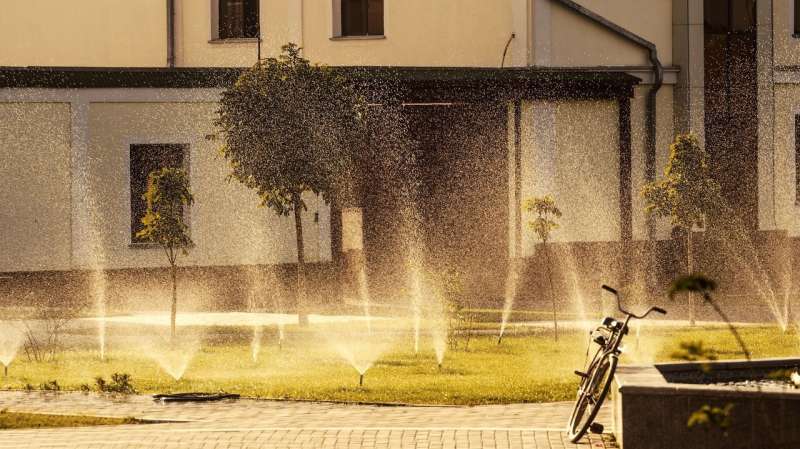Certain social, environmental factors found to increase a community's COVID-19 risk

The combination of threats from COVID-19 and extreme heat in many socially vulnerable communities across the United States is a real concern for public health officials, highlighting the need to better understand how compounding factors can increase COVID-19 risks.
In a new study published in GeoHealth, IUPUI researchers and colleagues examined the relationships between COVID-19 cases and deaths, social vulnerability and environmental measurements in 3,400 counties across the country's 48 contiguous states. Their findings show that from March 1 to Dec. 31, 2020, COVID-19 affected different counties across the U.S. at different points in time, and the most socially vulnerable communities were impacted more significantly during the summer months. They also identified social and environmental risk factors that may put communities at higher risk.
"We have been able to provide links between social vulnerability and environmental determinants of COVID-19 that will aid in the modeling of newer outbreaks and in decreasing the impact of COVID-19 in our most vulnerable communities," said Daniel Johnson, corresponding author on the study and an associate professor of geography in the IU School of Liberal Arts at IUPUI. "While COVID-19 may not be as impactful in the future as it was early on, it will likely be an annual concern for health authorities, and my hope is that they can use the models I have built to pinpoint the more vulnerable communities most at risk."
Using 15 variables from the Centers for Disease Control and Prevention's Social Vulnerability Index and seven environmental factors, including temperature and humidity, Johnson and his colleagues conducted a nationwide analysis using two models that compared COVID-19 cases and deaths at the county level. This allowed them to visualize the monthly spread of COVID-19 across the country on a county-by-county basis.
They studied each social vulnerability variable to determine which one best predicted COVID-19 cases and deaths. Their findings show that being a person of color or lacking a high school diploma were the most significant contributors to county residents' increased risk of both COVID-19 infection and death. For people 65 and older, their age contributed significantly to deaths but not to cases.
When examining solely environmental measures, their models showed that temperature had the strongest effect on a community's risk for infection and death. Increases in temperature lowered the risk of infection and death in most areas; however, this effect was not as pronounced in areas of higher social vulnerability.
"What I found most alarming was how COVID-19 settled into more socially vulnerable communities in June, July and August, when there is such concern for how much extreme heat is being experienced at that time," Johnson said. "There is so much stress on these communities already, and then COVID-19 came along, and they are experiencing an increased threat of extreme heat, COVID-19, extreme precipitation and more."
In examining COVID-19-related deaths, the researchers found that mortality rates followed the same trend as cases but peaked about four to six weeks later—something they observed across the entire U.S.
Johnson and his team plan to continue this work, combining both social determinants of health and environmental factors to create a better system to predict patterns of community risk.
Additional authors on the study are Niranjan Ravi of IUPUI and Christian Braneon of NASA Goddard Institute for Space Studies.
More information: Daniel P. Johnson et al, Spatiotemporal Associations Between Social Vulnerability, Environmental Measurements, and COVID‐19 in the Conterminous United States, GeoHealth (2021). DOI: 10.1029/2021GH000423




















